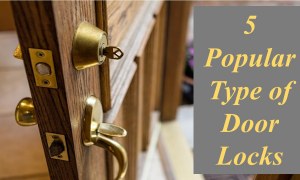🕑 Reading time: 1 minute
Today many people that are building or remodeling their houses choose to use eco-friendly building materials. An eco-friendly building material is one that increases the efficiency of energy used and reduces impact on human well-being and the environment. There are many different materials that can be used that are eco-friendly; from foundation, to insulation, to interior and exterior wall finishes, flooring, and countertop materials.Contents:
Categorization of Building Materials
Categorized based on Activity and Vendor Specific- Civil materials
- Waterproofing and Chemical additives
- Paving, flooring, dado and similar finishes
- Paints, colors, white washing, distempering and wood finishes
- Wood work
- Roofing and ceiling
- Doors and windows
- Water supply and sanitary fittings
- Electrical works
- Fire fighting system
- Miscellaneous
- Excavation work
- Road works
Evaluating Eco-friendly Materials

Why eco-friendly materials?
- Phenomenal growth in the construction industry that depends upon depletable resources.
- Production of building materials leads to irreversible environmental impacts.
- Using eco-friendly materials is the best way to build a eco-friendly building.

What is Eco-friendly material ?
Dictionary: describes a product that has been designed to do the least possible damage to the environment. US EPA – EPP program defines as: "products or services that have a lesser or reduced effect on human health and the environment when compared with competing products or services that serve the same purpose" Thus we talk of two issues – one that it does the least possible environmental damage and two that it is a comparative scale as there are very few materials that are completely eco-friendly.
Properties of Eco-Friendly Building Materials









Types of Eco-friendly Building Materials
Conventional Eco-friendly materials
- Bamboo, Bamboo Based Particle Board & Ply Board, Bamboo Matting
- Bricks sun dried
- Precast cement concrete blocks, lintels, slab. Structural and non-structural modular elements
- Calcined Phosphogypsum Wall Panels
- Calcium silicate boards and Tiles
- Cellular Lightweight Concrete Blocks
- Cement Paint
- Clay roofing tiles
- Water, polyurethane and acrylic based chemical admixtures for corrosion removal, rust prevention, water proofing
- Epoxy Resin System, Flooring, sealants, adhesives and admixtures
- Ferro-cement boards for door and window shutters
- Ferro-cement Roofing Channels
- Fly-ash Sand Lime Bricks and Paver Blocks
- Gypsum Board, Tiles, Plaster, Blocks, gypsum plaster fibre jute/sisal and glass fibre composites
- Laminated Wood Plastic Components
- Marble Mosaic Tiles
- MDF Boards and Mouldings
- Micro Concrete Roofing Tiles
- Particle Boards
- Polymerised waterproof compound
- Portland Pozzolana Cement Fly-ash / Calcined Clay Based
- Portland Slag Cement
- RCC Door Frames
- Ready Mix Cement Concrete
- Rubber Wood Finger Joint Board
- Stone dust
- Waterproof compound, adhesive, Polymer, Powder
Potential Eco-friendly materials & techniques
- Bagasse Board - BMTPC
- Bricks from Coal Washery Rejects -CBRI, Roorkee
- Building Blocks From Mine Waste - SERC
- Burnt Clay FlyAsh Bricks - CBRI, Roorkee
- Coir Cement Board - CBRI, Roorkee
- Compressed Earth Blocks - BMTPC
- EPS Composites and Door Shutters -CBRI, Roorkee
- Fibre Fly Ash Cement Boards -BMTPC
- Fibre Reinforced Concrete Precast Elements, Wall panels, Blocks, Manhole Covers - SERC
- Fibrous Gypsum Plaster Boards - CBRI, Roorkee
- Fly Ash Cellular Concrete, Fly Ash Cement Brick, Blocks - BMTPC
- Fly Ash Lime Cellular Concrete - CBRI, Roorkee
- Flyash Lime Gypsum Brick - BMTPC
- Insulating Bricks from Rice Husk Ash- Central Glass and Ceramic Research Institute, Kolkata
- Jute Fibre Polyester -BMTPC
- Non Erodible Mud Plaster - CBRI, Roorkee
- Polytiles - CBRI, Roorkee
- Timber from trees such as Poplar, Rubber, Eucalyptus - BMTPC
- Precast walling roofing components - CBRI, Roorkee
- Prefab Brick Panel System - CBRI, Roorkee


